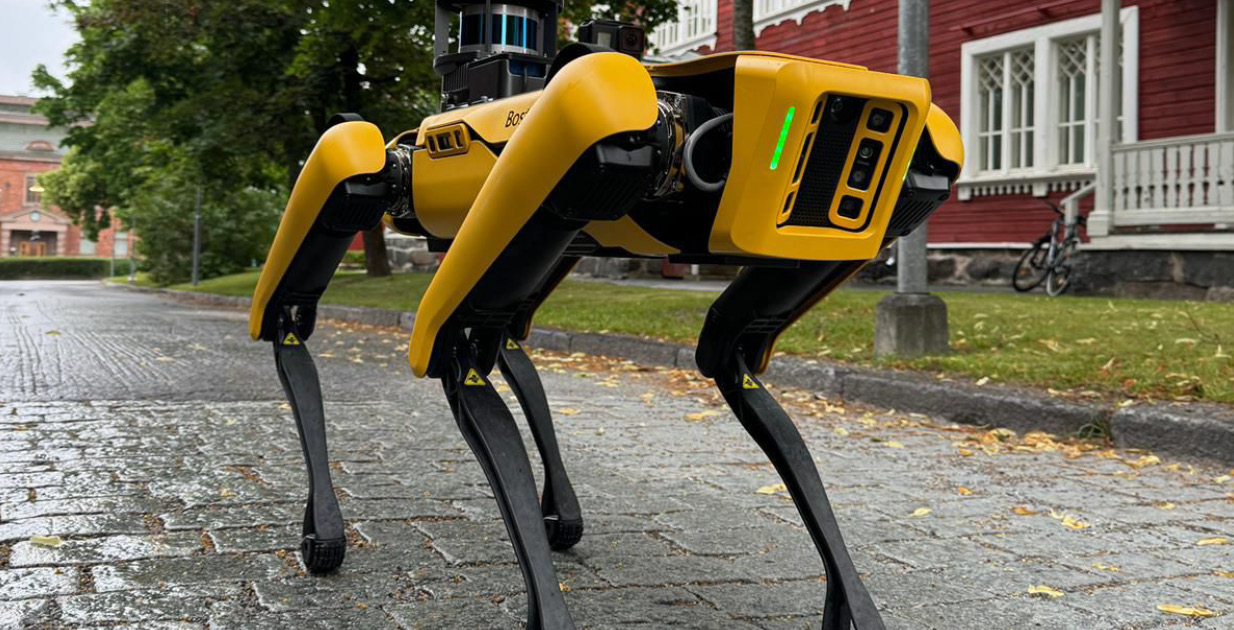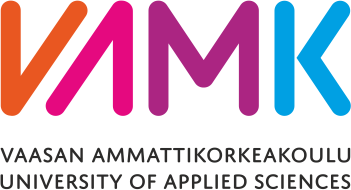
A state-of-the-art mobile robot to support education and research
Vaasa University of Applied Sciences’ state-of-the-art mobile robot supports mechanical engineering education and research using the latest technology. As part of the Next Generation Technobothnia investment project, funded through the European Regional Development Fund (ERDF) via the Regional Council of Ostrobothnia, Technobothnia’s equipment is being upgraded to better meet future educational needs.
Vaasa University of Applied Sciences has acquired a cutting-edge robot to its shared teaching and research laboratory. The Boston Dynamics Spot mobile robot, familiarly known as the robot dog, to specifically serve the needs of robotics and mechanical engineering. The robot dog will primarily be used in mechanical engineering education at VAMK, but it can also be utilised in the teaching of other fields of technology as well.
“Robotics education in technology at VAMK is among the best in Finland. This new investment provides new opportunities for applied research and development, as well as offers chances for innovative teaching through mobile robotics. We are at the forefront of this development, and our students will benefit from it fully,” says Ville Isoherranen, Vaasa University of Applied Sciences’ Vice-President and Director of the School of Technology.
Versatile functionality in demanding conditions
The mobile robot’s motion control is world-class. It weighs approximately 35 kg and can carry a load of about 15 kg.
“In terms of its platform, the robot dog is extremely versatile, as it can move, for example, on stairs and in other difficult places,” tells Mika Billing, Senior Lecturer in Mechanical Engineering at VAMK.
The mobile robot can also be equipped with various sensors, such as thermal or surveillance cameras, which allow it to monitor the environment.
“These features are useful, for instance, in factory areas or inside a plant,” Billing explains, adding, “The robot dog can be controlled via remote control or programmed to move autonomously. This enables it to access areas that might be too dangerous for humans.”
The mobile robot can be integrated with various interfaces.
“The key feature is that you can connect almost anything to it, and it can move independently on different surfaces,” Billing notes.
Meeting the educational needs of the future
Technobothnia is a joint teaching and research laboratory of Vaasa University of Applied Sciences, the Swedish-language university of applied sciences Novia, and the University of Vaasa. As part of the Next Generation Technobothnia (NGTB) investment project, funded by the Regional Council of Ostrobothnia, the laboratory’s equipment is being upgraded to better meet future educational needs.
“The NGTB project will elevate Technobothnia to a completely new level. This is necessary for a laboratory that has been in operation for nearly 30 years,” says Seppo Mäkinen Principal Lecturer in Information Technology at VAMK and the Project Manager responsible for acquisitions in the project.
In addition to the mobile robot, the investment project plans to acquire other robots for Technobothnia, including ones for the 5G laboratory and the 3D i.e. additive manufacturing laboratory.
“With ERDF funding obtained through the Regional Council of Ostrobothnia, we are building a modern virtual laboratory with devices, digital twins, and software, acquiring cutting-edge robotic equipment, and upgrading our 5G systems to meet the future needs of data networks,” continues Mäkinen.

